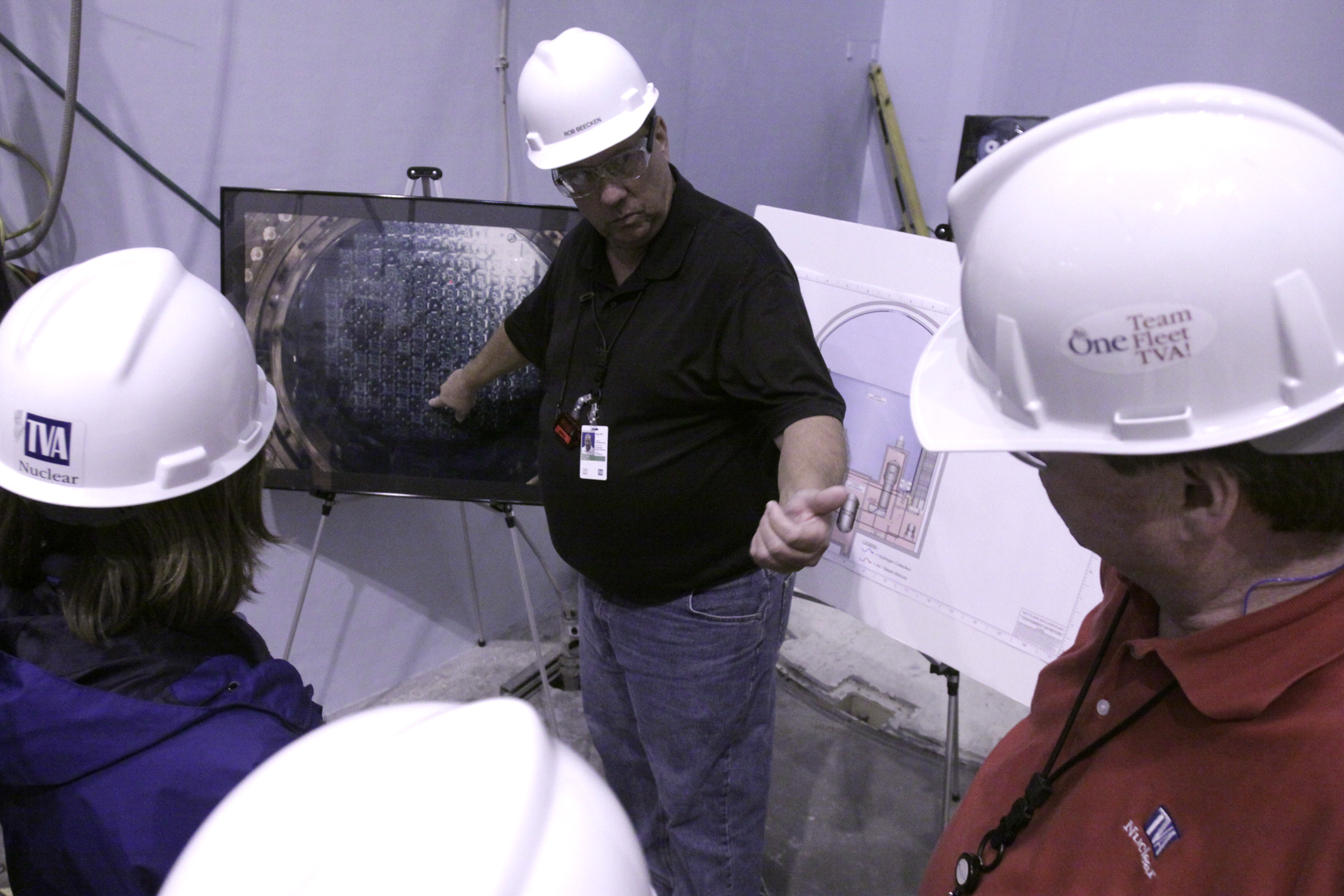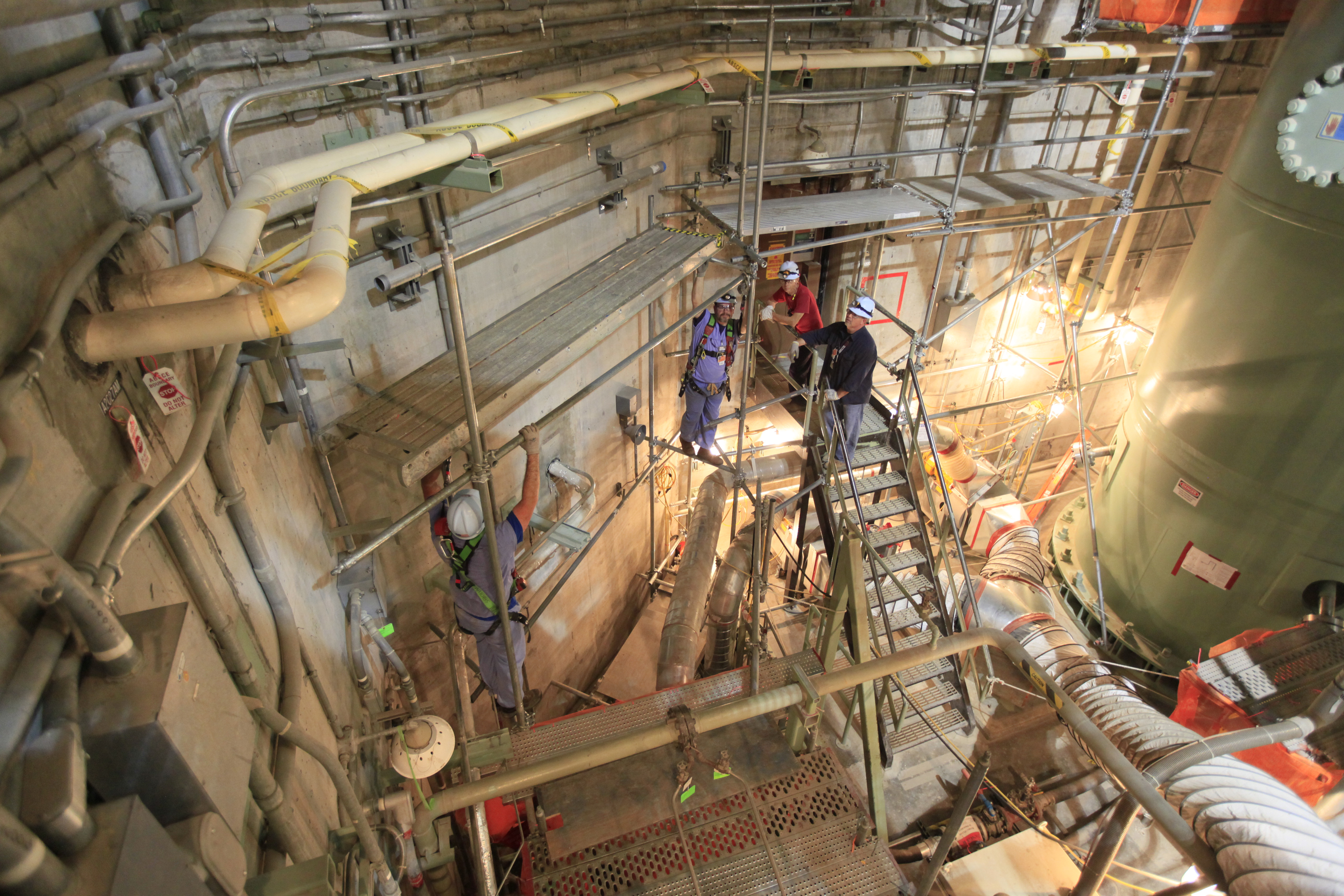WATTS BAR UNIT 2 TIMELINE1973 -- TVA begins work on two reactors at Watts Bar Nuclear Plant.1979 -- Three Mile Island makes headlines with a nuclear accident. TVA cites projections for slower load growth and begins deferring nuclear construction.1985 -- Watts Bar construction stops completely to address regulatory concerns.1996 -- Watts Bar Unit 1 goes online after 23 years of starts and deferrals.2007 -- TVA renews construction on the Unit 2 reactor -- the first reactor to be licensed for construction by federal regulators since Pennsylvania's 1979 Three Mile Island partial meltdown.2011 -- TVA announces the $2.5 billion reactor's 2012 planned completion will be delayed until 2013 and the costs will climb. TVA does not disclose how much higher. Two contractors are charged with falsifying cable inspection records, and in December, TVA discloses that the NRC had raised a safety concern flag over security. Mike Skaggs is named to replace Ashok Bhatnagar as the head of the Watts Bar Unit 2 construction project.2012 -- In January, TVA orders a safety "stand down" for about 1,000 contract workers at the new reactor after finding that some of those workers in December had erroneously removed cables from Unit 1 -- the operating reactor. In April, TVA announces the Watts Bar Unit 2 reactor will take three more years and up to $2 billion in added costs to complete.Source: Tennessee Valley Authority, Nuclear Regulatory Commission
Construction on the Watts Bar Unit 2 nuclear reactor is on schedule to be complete in December 2015, and the work still is targeted to cost about $4.2 billion, according to Mike Skaggs, TVA senior vice president for nuclear construction.
The Tennessee Valley Authority chose Friday to release a quarterly update on construction of what will be the utility's seventh nuclear reactor and led media representatives around the plant.
"We've also worked 17 million manhours without an [injuring] accident," Skaggs said. "I'm very proud of our people."
The news about Watts Bar Unit 2, 48 miles northeast of Chattanooga, hasn't always been so positive.
The plant's second reactor, originally begun in 1973, was mothballed in 1985 when it was said to be about half finished at a cost of $1.7 billion.
Work resumed in 2008 and was scheduled to be completed in late 2012 at an additional cost of about $2.5 billion.
But last April, after a year of headline-making missteps, TVA announced the work was three years behind and still another $2 billion over budget.
The missteps included two contractors charged federally with falsifying inspection records and a TVA-ordered work "stand down" after Unit 2 construction contractors mistakenly removed cables from Unit 1 -- the operating reactor.
"For the previous year," Skaggs said Friday, "we've been tracking to the assumptions we set. We've had quality performance of 97 percent adequacy in quality ... and the costs are still within the bounds of what we had approved."
But, he said, there still are challenges.
Those include "lessons learned" from the Fukushima, Japan, nuclear meltdowns in March 2011 after an 9.0 earthquake and tsunami threw reactors there into crisis.
Those lessons prompted new Nuclear Regulatory Commission standards for U.S. reactors, which added about $300 million to Watts Bar's Unit 2 price tag, Skaggs said.
The NRC required nuclear operators to reassess how stored nuclear waste onsite and potential natural catastrophes could impact safe operation and safe shutdowns of reactors.
In the Tennessee Valley, that has meant looking at increased seismic precautions and reassessing potential rainfall and hydrology problems.
"There's a new methodology that we're using to understand the impacts of rain on the dams and getting water on the site. So we're analyzing to make sure we can protect the plant and that we can safely shut it down in accordance with that new methodology," Skaggs said.
There also is the challenge of three more years of construction, including closing construction paperwork and handing off the newly built systems from construction workers to plant operators, he said.
"We've been used to operating just one plant here, and now we have to make sure we can operate both [reactors] together," Skaggs said.
Rob Beecken, the Watts Bar unit 2 startup and completion manager, said that process is an ongoing one that is completed in stages.
On Friday, Beecken and TVA spokesman Ray Golden showed journalists the opened and not-yet-used reactor of Unit 2.
They explained how nuclear fuel would be loaded and how the plant would be started and stopped with control rods.
Golden said 193 fuel assemblies in a 12-foot-by-12-foot space in the reactor filled with uranium pellets "can generate enough power for 700,000 homes for four years."


